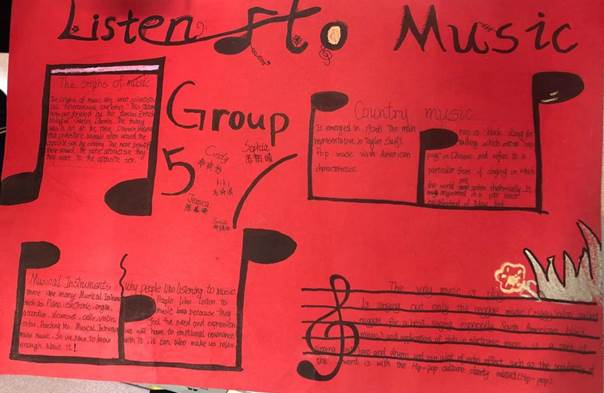2021-01
by Kane
English as a foreign language continues toplay an important role in the daily life for an ever-growing number of peopleall around the world. In recognition of this, many schools offer students theopportunity to gain and develop such skills and in this regard HuameiInternational school is no different. More importantly however, it is throughthe opportunity of Cambridge classes that students have the most access towardsgaining and developing their English speaking abilities. To illustrate such apoint, this article will discuss an activity currently being presented toCambridge students, specifically an activity concerning a group posterpresentation.
As a background to the ideology behind thepurpose of such an activity, it is relevant to highlight a teaching theoryknown as ‘Bloom’s Taxonomy’. This theory has the privilege of being one of themost highly regarded educational teachings and so, as a result, it’s a conceptI personally try to employ into my own teaching style. Put simply, Bloom’sTaxonomy pertains to a hierarchical ordering of cognitive skills servingto facilitate learning upon which there are six levels resembling that of apyramid: remembering, understanding, applying, analysing, evaluating, andcreating. The first level ‘remembering’ is in regards to a variety of activitiessuch as the memorization of passages, a concept that is highly valued in atypical Eastern classroom. The second level ‘understanding’ expands on thefirst by including abilities such as summarizing the plot of a story. Followingthis is the third level ‘applying’, for instance tasking students to use newlylearned grammar, before expanding to and including the subsequent fourth andfifth levels of ‘analysing’ and ‘evaluating’. It is the last level, however,where students learn to ‘create’ which is the most difficult to attain. Yet itis here in the highest level of Bloom’s Taxonomy in which the Cambridge classesstrive to achieve and a perfect illustration of this is with the posterpresentation.
The task of making a poster presentationbegan with the simple exercise by which students were asked to form a group.After this had been established, students were presented with the choice ofcreating a presentation for any hobby that they deemed of interest. It was onlyafter making their decision that students moved onto the next part of theirtask, that of independent research. At this conjuncture students were givenclass time to which they had to use a computer to understand, analyse, and thenevaluate content for their respective hobby. Such a concept occurs regularly inthe West and, despite not being common in Eastern schools, students wereeventually able to succeed in creating detailed notes pertaining to that oftheir chosen hobby. Now armed with this relevant information, students hadfurther lesson time dedicated towards demonstrating the final level of Bloom’sTaxonomy, creativity, to which they transcribed the attained information intothat of a poster.
Finally, after completing the above steps,students were tasked with presenting what they had learned before theirclassmates in a strict monitored environment. Such an experience willundoubtedly be relevant in their later life whilst it also had the addedbenefit of prompting every student to contribute to the speaking element of thetask regardless of their level in English. The result was largely a success asstudents proficient in their English ability were placed outside their comfortzone whilst the students at a lower level seized their chance to demonstratetheir potential with a different learning style. The ramifications of thisproject serve to reinforce the idea that, in addition to a more rigorouseducation, Cambridge classes offer the chance to experience and attemptdifferent styles of learning that students otherwise wouldn’t experience in amore traditional classroom environment. An experience to which they emerge asbetter and more well-rounded individuals.



 English
English 中文版
中文版

